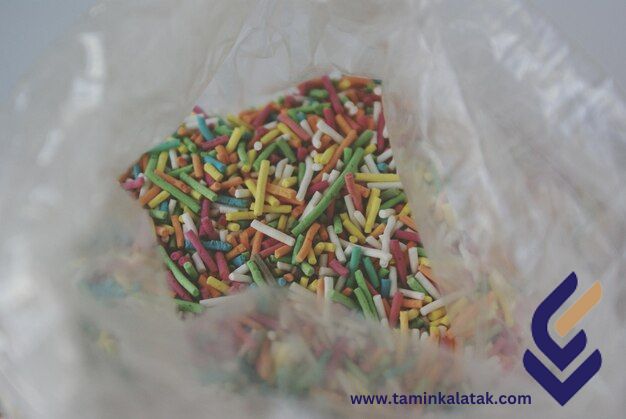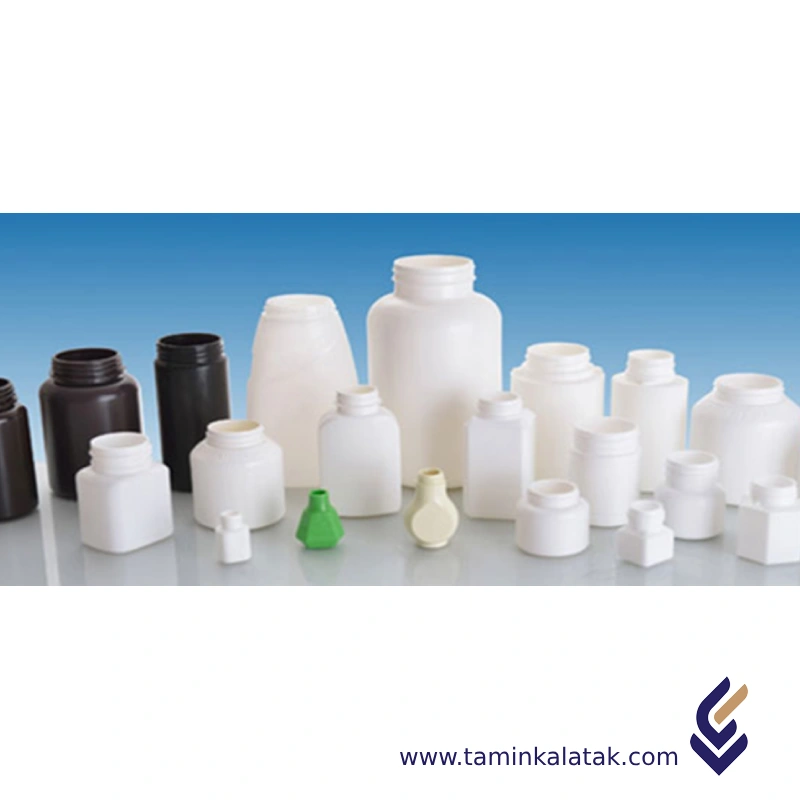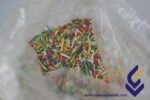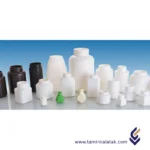Polymers are made up of very large molecules made up of many repeating units called monomers, which ultimately form this long polymer chain
Low Density PolyEthylene Injection (LDPE)
LDPE injection molding grade
LDPE injection molding grade is a specialized type of Low-Density Polyethylene designed for molding applications that require flexibility, impact resistance, and ease of processing.
Structure
The structure of LDPE injection molding grade is characterized by a highly branched, amorphous polymer configuration, which distinguishes it from other forms of polyethylene such as High-Density Polyethylene (HDPE). The polymer chains in LDPE are irregularly branched, meaning the chains do not pack closely together, resulting in a low degree of crystallinity. The polymerization of LDPE occurs through free-radical polymerization, typically under high pressure, which causes the long chains of the polymer to have side branches. For the injection molding grade, the polymer structure is tailored to achieve a higher melt flow index (MFI), which facilitates the material’s smooth flow and filling into injection molds.
Properties
LDPE injection molding grade is a versatile polymer characterized by its high degree of branching and amorphous structure, which results in excellent flexibility. This material ensures smooth and efficient flow during the injection molding process. This makes it suitable for producing intricate parts with good surface finish. LDPE injection molding grade exhibits moderate tensile strength (around 8-12 MPa) and excellent elongation at break, providing resistance to cracking and impact. The material is also known for its good chemical resistance, particularly against acids, bases, and alcohols, while being less resistant to hydrocarbons. Additionally, it offers low moisture absorption and performs well under low temperatures, maintaining its flexibility. LDPE is easy to process and heat sealable. Despite its high impact resistance and toughness, it has a relatively low stiffness compared to higher-density polyethylene grades.
Applications
- Consumer Products:
- Household containers, lids, and dispensers
- Toys and other recreational items
- Furniture parts and lightweight molded components
- Packaging Industry:
- Caps, closures, and flexible lids
- Cosmetic and personal care packaging
- Food storage containers (FDA-approved grades)
- Medical & Pharmaceutical:
- Syringes, laboratory equipment, and sterile packaging
- Medical device housings and disposable instruments
- Industrial & Electrical:
- Cable coatings and wire insulation
- Protective covers and soft-touch components
- Pipes and low-pressure fittings
- Automotive Industry:
- Interior trims, protective covers, and soft components
- Fluid storage containers and under-the-hood parts
- Construction & Agriculture:
- Waterproofing membranes, gaskets, and sealants
- Molded irrigation components
Advantages
- Excellent Processability
- High Flexibility & Impact Resistance
- Lightweight Material
- Good Chemical & Moisture Resistance
- Food-Safe and Non-Toxic
- Cost-Effective
Disadvantages
- Low Mechanical Strength
- Limited Heat Resistance
- Poor UV Resistance
- Not Biodegradable
- Weak Barrier Properties
Applications
| Applications | , , , , , , , , |
|---|
LDPE INJEXTION
| Prodact | Grade | MFI (g/10 min) | Density (g/Cm3) | Process Metod | Application / Description | Description | Data Sheet | MSDS | Brochure |
|---|---|---|---|---|---|---|---|---|---|
| INJECTION | 1900 | 20 | 0.919–0.922 | Injection Molding / Blow Molding (limited use) | Toys and Consumer Goods, household items / Industrial Applications / Thin-Walled Products / General Injection Molded Items | ||||
| INJECTION | LIM1922 | 22 | 0.922 | Injection Molding Products / Blow Molding (Limited Use) | Caps and Closures / Household Items / Toys / Packaging Components / Industrial Parts | LIM 1922 is a low-density polyethylene, offering a unique combination of consistent process-ability, flexibility and toughness. This grade developed for application that require a good balance between flow properties and mechanical properties. LIM 1922 has been manufactured under SABTEC licensed technology. | |||
| INJECTION | LEC 1969 | 20-22 | 0.922 | Injection Molding / Blow Molding (limited) | Caps and Closures / Household Products / Packaging Components / Toys / Industrial Items | LEC 1969 is the first commercially proven tubular LDPE grade for extrusion coating in Iran. This product is developed as general purpose application in extrusion coating segments. LEC 1969 can be used on low and also very high line speed extrusion coating and lamination processes. When prosesses on suitable hardware, LEC 1969 exhibits excellent draw down ability, good edge stability and low neck-in. Due to its excellent draw down ability and good adhesion, very thin coating layers can be applied on the substrate. |










